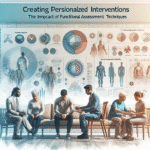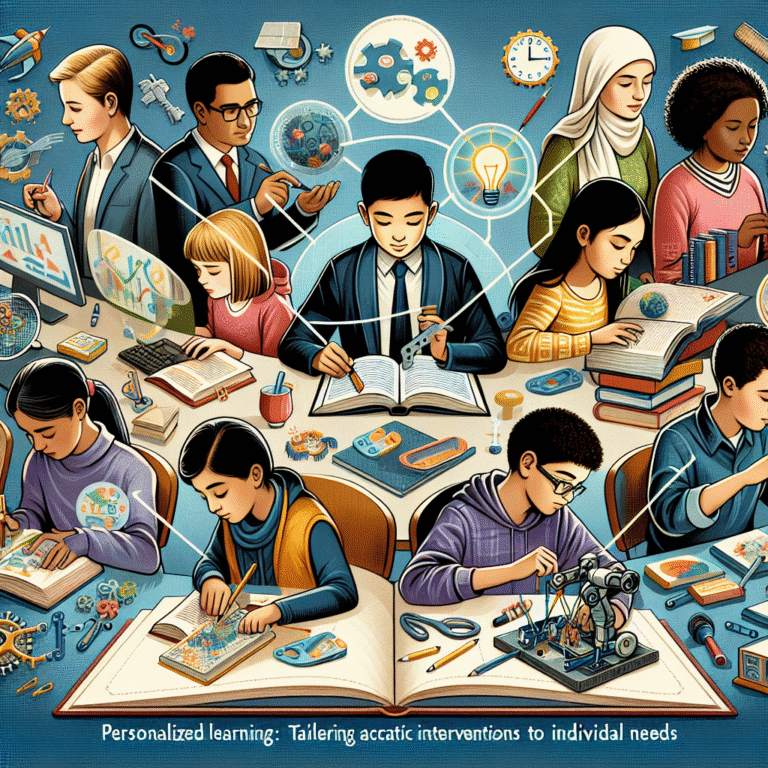
Introduction: The Road to Academic Excellence
In today’s fast-paced educational landscape, the quest for academic excellence is more pressing than ever. With rising competition and diverse learning needs, educators are constantly on the lookout for effective strategies. Enter “Boosting Student Success: Proven Academic Interventions That Make a Difference.” These interventions are essential for creating a nurturing framework where students can thrive, achieve their goals, and unlock their full potential. As we delve into this topic, we’ll explore various proven interventions that have been demonstrated to enhance student success in practical, measurable ways.
Understanding Student Success
What Does Student Success Mean?
Student success goes beyond grades and test scores. It encompasses vital elements like engagement, emotional well-being, and social skills. A holistic vision for student success recognizes that each learner is unique, with distinct needs, strengths, and challenges. It includes:
- Academic achievement: Demonstrated by grades, standardized test scores, and overall performance.
- Emotional intelligence: Skills such as self-regulation, resilience, and social awareness.
- Engagement: Active participation in school activities, both curricular and extracurricular.
- Post-secondary readiness: The capacity to move seamlessly into higher education or the workforce.
When we discuss "Boosting Student Success: Proven Academic Interventions That Make a Difference," it’s crucial to understand this multi-dimensional approach.
The Need for Effective Interventions
The current educational framework often struggles to accommodate diverse learning styles and needs. Many students, whether due to socio-economic factors or personal challenges, find themselves at risk of falling behind. The statistics are stark. According to the National Center for Education Statistics (NCES), about one in five students fails to graduate high school on time. This stark reality underscores the urgent need for targeted interventions.
Proven Academic Interventions That Make a Difference
1. Tiered Instruction
Explanation: Tiered instruction involves differentiating lessons to meet the varying needs of students within the same classroom.
Case Study: A middle school in California implemented tiered instructional strategies in mathematics, whereby students were grouped based on their proficiency levels. The result? A staggering 30% increase in proficiency rates among previously struggling students.
| Intervention Type | Outcome | Comments |
|---|---|---|
| Tiered Instruction | 30% increase in student proficiency | Flexibility in teaching methods tailored to individual needs |
This case illustrates the effectiveness of tiered instruction as a means of "Boosting Student Success: Proven Academic Interventions That Make a Difference."
2. Collaborative Learning
Explanation: Collaborative learning encourages students to work together to solve problems and analyze concepts. It promotes peer-to-peer interaction and fosters essential soft skills.
Case Study: A high school in New York City adopted a project-based learning model where students worked in teams to dissect historical events. Students reported improved grades and increased engagement, with 90% expressing they felt more prepared for future challenges.
By creating a learning environment that emphasizes collaboration, educators effectively boost student success.
3. Social-Emotional Learning (SEL)
Explanation: SEL focuses on the emotional aspects of learning, equipping students with skills like self-awareness, emotional regulation, and relationship building.
Case Study: A school in Chicago integrated an SEL curriculum across all grade levels. Teachers noticed a remarkable decrease in disciplinary issues and improved academic performance, with a 25% increase in average GPA.
The presence of SEL programs is fundamental to "Boosting Student Success: Proven Academic Interventions That Make a Difference," highlighting the importance of emotional intelligence in education.
4. Responsive Teaching
Explanation: Responsive teaching is a data-driven approach that involves adapting instructional techniques based on real-time assessment and feedback.
Case Study: A small rural school district in Ohio employed responsive teaching methods in reading and literacy. Over the course of a year, the proportion of students reading at grade level surged by 40%. This demonstrates the importance of adaptability in effective teaching strategies.
5. Mentoring Programs
Explanation: Mentoring provides students with support from adults or peers who guide them academically and emotionally.
Case Study: A university’s mentoring program paired freshman students with upperclassmen, leading to an impressive 20% increase in retention rates. These mentoring relationships fostered a strong sense of community and belonging, showcasing the impact of mentorship on "Boosting Student Success: Proven Academic Interventions That Make a Difference."
The Role of Technology in Academic Interventions
Blended Learning Environments
Explanation: Blended learning combines traditional face-to-face instruction with online learning components, offering flexibility and personalization.
Data Chart: Impact of Blended Learning on Student Outcomes
| Metric | Pre-Intervention | Post-Intervention |
|---|---|---|
| Average Test Scores | 65% | 85% |
| Student Engagement Level | Moderate | High |
Adaptive Learning Technologies
Explanation: Adaptive learning technologies tailor educational experiences based on individual student performance, allowing for a personalized approach that can address the diverse needs of learners.
Case Study: A district-wide initiative in Arizona implemented adaptive learning technologies for math programs. The result was a 50% improvement in test scores among students who previously struggled with traditional methods.
Fostering a Supportive School Environment
Building Positive Relationships
The importance of fostering a positive school climate cannot be overstated. Positive relationships between teachers and students lead to greater engagement, attendance, and overall academic success.
Parental Involvement
Parental engagement greatly influences student success. Schools that actively involve parents in their child’s education report higher graduation rates and academic performance.
Data Table: Correlation Between Parental Involvement and Academic Achievement
| Parental Involvement Level | Average GPA | Graduation Rate |
|---|---|---|
| High | 3.6 | 95% |
| Moderate | 3.0 | 80% |
| Low | 2.5 | 65% |
Conclusion: Inspiring a Future of Success
In the fast-evolving world of education, investment in proven academic interventions is invaluable. By focusing on the strategies outlined in "Boosting Student Success: Proven Academic Interventions That Make a Difference," educators can create a robust framework that allows all students to excel. From tiered instruction and collaborative learning to the integration of technology and supportive school environments, success is achievable.
Let us challenge ourselves to implement these interventions thoughtfully and purposefully, creating an educational experience that nurtures not just academic success, but overall well-being. The future of our students depends on the steps we take today.
FAQs
1. What are the most effective interventions to boost student success?
Effective interventions include tiered instruction, collaborative learning, social-emotional learning, responsive teaching, and mentoring programs.
2. How does social-emotional learning impact academic performance?
Social-emotional learning enhances emotional intelligence, leading to improved relationships, engagement, and academic success.
3. Can technology enhance academic interventions?
Absolutely! Technologies like blended learning environments and adaptive learning systems provide personalized educational experiences that boost student engagement and performance.
4. Why is parental involvement critical to student success?
Parental involvement has a strong correlation with higher academic achievement and graduation rates. Engaged parents foster supportive home environments conducive to learning.
5. How can teachers implement these interventions in their classrooms?
Teachers can begin by assessing student needs, creating a collaborative classroom atmosphere, incorporating technology, and developing relationships with students to tailor interventions effectively.
This article serves as a comprehensive guide for educators, parents, and policymakers looking to understand and implement effective strategies for "Boosting Student Success: Proven Academic Interventions That Make a Difference". With a clear dedication to these interventions, we can pave the way for a bright academic future.
















